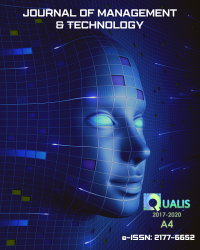Example of providing design parameters of smoke ventilation
DOI:
https://doi.org/10.20397/2177-6652/2023.v23i0.2603Palavras-chave:
safety, air balance, smoke ventilation, evacuationResumo
Ensuring the safety of people during evacuation in the event of a fire in a building is one of the highest priorities in the design of smoke ventilation systems (hereinafter SVS). Engineers are faced with the question of how to achieve the required parameters and fulfil all the relevant requirements for systems according to regulatory documentation. Often, design experience must be combined with activities directly related to supervision of compliance with the installation of a developed and released project at the facility itself. The purpose of this study is to demonstrate one of the problems in the design of SVS systems and to propose a way to solve it, based on practical experience.Referências
Alves, J. E. M. (2023). How to Make the Fundamental Principles of the Labour Law Be Compatible with the Modern Work?. Journal of Law and Corruption Review, 5(00), e049. https://doi.org/10.37497/CorruptionReview.5.2023.49
Artamonova, I., Kharisov, I., Adamtsevich, L., Morgunov, N. (2022). Evaluating the effectiveness of cyber-physical systems and technologies in the construction complex. Nexo Revista Científica, 35(03), 787–789. https://doi.org/10.5377/nexo.v35i03.15008
Berezhnov, N. (2022). Estimation of the resistance to movement of a wheeled tractor train in field tests. Revista Ingeniería UC, 29(1), 15–25. https://doi.org/10.54139/revinguc.v29i1.155
Code of Rules 253.1325800.2016. (2017). "Engineering systems of high-rise buildings" with amendment No. 1. Moscow: Standartinform, Ministry of Construction and Housing and Communal Services of the Russian Federation.
Code of Rules 7.13130.2013. (2013). Heating, ventilation and air conditioning. Fire safety requirements with amendments No. 1, 2. Ministry of the Russian Federation for Civil Defense, Emergencies and Elimination of Consequences of Natural Disasters. Retrieved from: https://mchs.gov.ru/dokumenty/svody-pravil/svody-pravil-mchs-rossii/6669
Duisenova, S., Atykhanov, A., Karaivanov, D., Kassymbayev, B., Kalym, K., Sagyndikova, A. (2020). Experimental Equipment for Investigation of Soybean Storage with Active Ventilation. Journal of Ecological Engineering, 21(3), 117-127.https://doi.org/10.12911/22998993/118289
Federal law No. 123-FZ. (July 14, 2008). “Technical Regulations on fire safety requirements” (as amended on 14.07.2022). Retrieved from: https://rg.ru/documents/2008/08/01/pojar- reglament-dok.html
Ferreira, R. de O., & Macedo de Melo, F. A. (2023). Due Diligence - An Approach to Mitigating Risk In Relationships With Third Parties. Journal of Law and Corruption Review, 5(00), e051. https://doi.org/10.37497/CorruptionReview.5.2023.51
Khoruzhy, L. I., Katkov, Y. N., Katkova, E. A., Khoruzhy, V. I., & Dzhikiya, M. K. (2022). Opportunities for the Application of a Model of Cost Management and Reduction of Risks in Financial and Economic Activity Based on the OLAP Technology: The Case of the Agro- Industrial Sector of Russia. Risks, 11(1), 8. http://dx.doi.org/10.3390/risks11010008
Krindges, L. L. A. V., & Alves Da Silva, M. (2022). The Impact of ESG Practices on the Actualization of Fundamental Rights in the Business Sphere: A Deductive Investigation. ESG Law Review, 5(ssue), e01608. https://doi.org/10.37497/esg.v5issue.1608
Li, Y., Zub, A., Zha, Sh. (2022). Impact of attracting intellectual capital on the innovative development of construction engineering enterprises. Revista Gestão & Tecnologia, 22(4), 153-168. https://doi.org/10.20397/2177-6652/2022.v22i4.2435
Manuylenko, V. V., Ermakova, G. A., Gryzunova, N. V., Koniagina, M. N., Milenkov, A. V., Setchenkova, L. A., & Ochkolda, I. I. (2022). Generation and Assessment of Intellectual and Informational Capital as a Foundation for Corporations’ Digital Innovations in the “Open Innovation” System. International Journal of Advanced Computer Science and Applications, 13(9), 922–932. https://doi.org/10.14569/IJACSA.2022.01309118
Martirosyan, A.V., Ilyushin,Y.V., Afanaseva, O.V. (2022). Development of a Distributed Mathematical Model and Control System for Reducing Pollution Risk in Mineral Water Aquifer Systems. Water, 14. https://doi.org/10.3390/w14020151
Methodological Recommendations No. 5.5.1-2023. (2023). "Smoke ventilation systems of residential and public buildings". Nonprofit Partnership "Engineers of Heating, Ventilation, Air Conditioning, Heat Supply and Building Thermophysics". Retrieved from: https://www.abok.ru/pages.php?block=plan
Noronha , M. E. S. de, Martins, J. B. N., Lietti , T., & Silva , R. de S. V. (2023). Driving Competitive Advantage in Cleantech Companies: A Model of Smart Regulation, Organizational Agility, and Technological Innovation. ESG Law Review, 6(1), e01594. https://doi.org/10.37497/esg.v6i1.1595
Silva, A. de O., & Janes, D. dos S. (2023). Challenges And Opportunities of Artificial Intelligence in Education in A Global Context. Review of Artificial Intelligence in Education, 4(00), e01. https://doi.org/10.37497/rev.artif.intell.education.v4i00.1
Vinichenko, M. V., Klementyev, D. S., Rybakova, M. V., Malyshev, M. A., & Malysheva, N.
S. (2021). Satisfaction with the quality of life in employees of russian enterprises in the social partnership system. Quality - Access to Success, 22(180), 103–108.
Xiang, Zh., Jinghao, X., Nazarov, Y. (2023). Application of computer-aided design method to optimize the modeling and design stages for industrial products. Revista Gestão & Tecnologia, 23(1), 366-379. https://revistagt.fpl.edu.br/get/article/view/2576
Zakharov, A.V., Zabalueva, T.R. (2022). Identification of approaches to architectural and structural solutions in the design of sports buildings. Nexo Revista Científica, 35(03), 736– 745. https://doi.org/10.5377/nexo.v35i03.15002
Zenin, S., Nekrasov, M. (2022). Developing models of the interaction between local and territorial public self-government bodies to determine legal and organizational principles of their effective partnership. Lex Humana, 14(2), 506–519.
Downloads
Publicado
Como Citar
Edição
Seção
Licença
Copyright (c) 2023 Revista Gestão & Tecnologia

Este trabalho está licenciado sob uma licença Creative Commons Attribution-NonCommercial 4.0 International License.
Os direitos, inclusive os de tradução, são reservados. É permitido citar parte de artigos sem autorização prévia desde que seja identificada a fonte. A reprodução total de artigos é proibida. Em caso de dúvidas, consulte o Editor.


